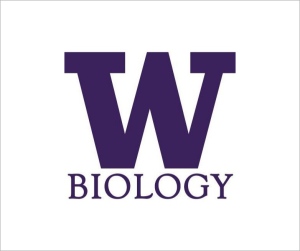Eliza Heery recounts her recent experience in Sydney, Australia through NSF’s EAPSI program in a two-part series…
A Diary from Down Under
June 7, 2016: Greetings from down under! I’m in Sydney for 3 months working with one of my all-time top science heroes, Dr. Emma Johnston, at University of New South Wales (UNSW). It’s all thanks to support from the National Science Foundation and the Australian Academy of Science, through a program they jointly fund called EAPSI – East Asia Pacific Summer Institute.
Of course, it’s not at all summer here in Australia. My approach into Sydney Airport was among the most exciting aviation experiences I can recall due to a 100-year winter storm that was pounding the coast of New South Wales. Upon deplaning, I discovered a usually fair-weather city deep in the throes of winter weather chaos. City buses were rerouted, sirens of emergency vehicles chirped persistently in the distance, and Hassan, my Uber driver, had to turn around on three different occasions to avoid downed power lines. Harrowing stories from the storm’s victims have since emerged. Storm surge and wave action seized up to 50 horizontal meters of shoreline in a single night in some locations, wreaking havoc for residents and businesses.
[My first reaction as a wise American tourist landing in the midst of a 100-year storm was to flock to the water’s edge to watch. Here was the scene above iconic Bondi Beach in East Sydney (June 5, 2016).]
The fact that the sea poses such a risk to coastal communities (both in Australia and around the world) is a small part of why I am here conducting research. I study the artificial structures we build to protect shorelines from seawater inundation, also known as shoreline armoring. As climate change raises sea levels and human populations migrate towards the coasts (reference), the need for shoreline armoring is more critical than ever. Yet, we must balance this need with the potential negative consequences of armoring. Previous research suggests that artificial structures such as seawalls and breakwaters alter the composition of marine ecosystems (reference). These changes could influence the goods and services that marine ecosystems provide to coastal communities, such as pollution processing and recreational fishing.
Over the next 3 months, I will work closely with researchers at UNSW to examine how marine trophic (feeding) relationships compare between natural and armored shorelines in Sydney Harbour. Sydney is the epicenter for research on urban marine ecosystems, and researchers here have unparalleled knowledge of the species that live on artificial structures locally. This knowledge will enable me to use stable isotope analysis and next generation sequencing to identify the position of each species in the food chain and its original source of photosynthetic energy. By comparing these characteristics between organisms living on altered and natural shorelines, we will gain insight into how the structure and function of marine communities may be influenced by shoreline armoring.
June 20, 2016: Field work complete! We spent last week collecting sediment samples and epilithic (animals that live on rocks) specimens from four sites in Sydney Harbour.
We launched out of the Sydney Institute of Marine Science (SIMS), a marine lab in the heart of Sydney Harbour that was established just over a decade ago in a collaboration between four major universities: University of Technology Sydney (UTS), the University of Sydney, Macquarie University, and UNSW. SIMS has provided easy boat access, lab facilities, and much more established means for collecting samples than I’m used to in Seattle. Sample collection didn’t even require trespassing or intertidal bouldering with heavy equipment! It was lovely.
The only downside was my sudden realization that Bull Sharks are not just a curse inflicted on the good people of Florida; these aquatic hunters also patrol the waters of Sydney Harbour. My usual approach of diving in to collect samples by hand was not going to work. Luckily we were able to deploy tools from the surface to collect samples at the murkiest of our sites. I’m happy to say all samples are now safely stashed in cold storage awaiting analysis, and I still have all my appendages.
Stay tuned for more on the wild and beautiful creatures in our samples, and on my adventures in lab as I explore feeding relationships in Sydney’s urban marine ecosystems.


